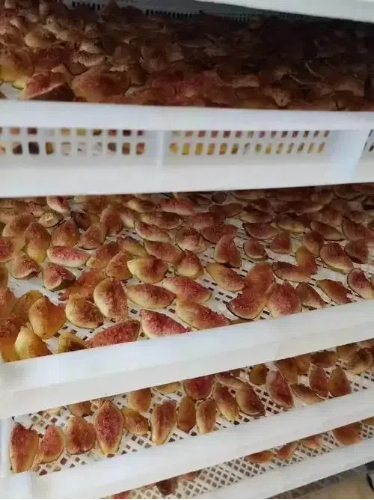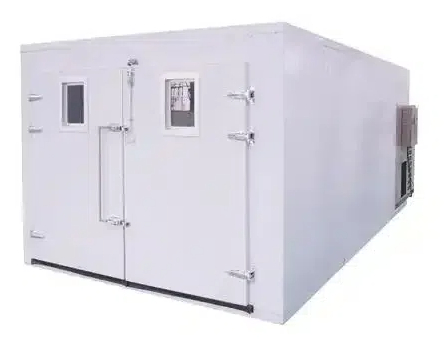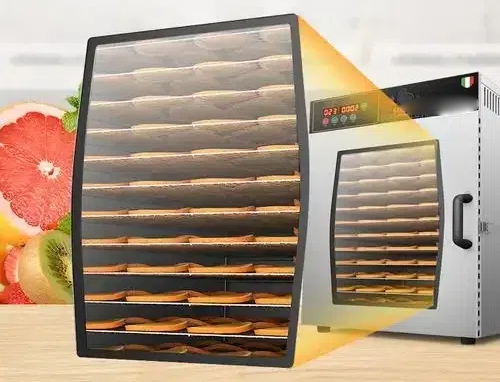
Content Menu
● Understanding Heat Pump Dryers
● How Heat Pump Dryers Work
● Benefits of Heat Pump Dryers for Food Processing
>> 1. Energy Efficiency
>> 2. Consistent Drying Temperature
>> 3. Preservation of Nutritional Value
>> 4. Reduced Environmental Impact
>> 5. Versatility in Food Types
>> 6. Improved Shelf Life
>> 7. Lower Operating Costs
>> 8. Enhanced Product Quality
>> 9. Minimal Noise Levels
>> 10. Compact Design
● Conclusion
● Frequently Asked Questions
>> 1. What types of food can be dried using a heat pump dryer?
>> 2. How much energy can a heat pump dryer save compared to traditional dryers?
>> 3. Do heat pump dryers require special maintenance?
>> 4. Can heat pump dryers operate in humid conditions?
>> 5. What is the typical lifespan of a heat pump dryer?
In the world of food processing, drying is a crucial step that significantly affects the quality, shelf life, and safety of food products. As a leading manufacturer of food drying machines in China, we specialize in providing OEM services to international brands, wholesalers, and producers. One of the most innovative technologies in food drying is the heat pump dryer. This article explores the benefits of using heat pump dryers over traditional drying methods, particularly in the context of food processing.

Understanding Heat Pump Dryers
Heat pump dryers utilize a closed-loop system that recycles heat, making them highly energy-efficient. Unlike traditional dryers that expel hot air and require constant energy input, heat pump dryers extract moisture from the food while reusing the heat generated in the process. This not only conserves energy but also maintains a consistent drying temperature, which is essential for preserving the nutritional value and flavor of food products.
How Heat Pump Dryers Work
Heat pump dryers operate by circulating air through a heat exchanger. The process involves several key components:
1. Evaporator: This component absorbs moisture from the air inside the dryer. The moisture-laden air is then cooled, causing the water vapor to condense into liquid form.
2. Compressor: The compressor increases the pressure of the refrigerant, which raises its temperature. This hot refrigerant is then sent to the condenser.
3. Condenser: In the condenser, the hot refrigerant releases its heat to the air that is being circulated back into the drying chamber. This process heats the air, which is then used to dry the food.
4. Expansion Valve: This component reduces the pressure of the refrigerant, allowing it to return to the evaporator to repeat the cycle.
Benefits of Heat Pump Dryers for Food Processing
1. Energy Efficiency
One of the most significant advantages of heat pump dryers is their energy efficiency. Traditional dryers can consume a large amount of energy, especially when drying large batches of food. In contrast, heat pump dryers can reduce energy consumption by up to 65%. This is particularly beneficial for food manufacturers looking to lower operational costs while maintaining high-quality products.

2. Consistent Drying Temperature
Heat pump dryers maintain a consistent drying temperature, which is crucial for food quality. Traditional dryers often experience temperature fluctuations, which can lead to uneven drying. This inconsistency can affect the texture, flavor, and nutritional value of the food. Heat pump dryers, on the other hand, provide a stable environment that ensures uniform drying, preserving the integrity of the food.
3. Preservation of Nutritional Value
The gentle drying process of heat pump dryers helps to preserve the nutritional value of food. High temperatures can degrade vitamins and minerals, leading to a loss of nutritional quality. By operating at lower temperatures, heat pump dryers minimize nutrient loss, making them an ideal choice for health-conscious consumers and manufacturers.
4. Reduced Environmental Impact
With growing concerns about environmental sustainability, heat pump dryers offer a greener alternative to traditional drying methods. Their energy efficiency translates to lower carbon emissions, making them a more environmentally friendly option. Additionally, the closed-loop system reduces the need for external heat sources, further decreasing the environmental footprint of food processing operations.
5. Versatility in Food Types
Heat pump dryers are versatile and can be used for a wide range of food products, including fruits, vegetables, herbs, and meats. This adaptability makes them suitable for various applications in the food industry. Whether you are drying apples, tomatoes, or fish, a heat pump dryer can handle the task efficiently.
6. Improved Shelf Life
Properly dried food has a longer shelf life, which is essential for food manufacturers and retailers. Heat pump dryers effectively remove moisture, inhibiting the growth of bacteria and mold. This results in products that can be stored for extended periods without compromising quality. For businesses, this means reduced waste and increased profitability.
7. Lower Operating Costs
While the initial investment in a heat pump dryer may be higher than that of traditional dryers, the long-term savings on energy bills and maintenance costs make them a cost-effective choice. The durability and reliability of heat pump dryers also contribute to lower operating costs over time.
8. Enhanced Product Quality
The ability to control drying conditions precisely leads to enhanced product quality. Heat pump dryers can be programmed to adjust temperature and humidity levels according to the specific requirements of different food types. This level of control ensures that the final product meets the desired standards for taste, texture, and appearance.
9. Minimal Noise Levels
Heat pump dryers operate quietly compared to traditional dryers, which can be noisy and disruptive in a production environment. This feature is particularly beneficial for facilities that prioritize a comfortable working environment for their employees.
10. Compact Design
Many heat pump dryers are designed to be compact and space-efficient, making them suitable for facilities with limited space. Their smaller footprint allows for easier integration into existing production lines without requiring significant modifications.
Conclusion
In conclusion, heat pump dryers represent a significant advancement in food drying technology. Their energy efficiency, consistent drying conditions, and ability to preserve nutritional value make them an excellent choice for food manufacturers. As the demand for high-quality, sustainable food products continues to grow, investing in heat pump dryer technology can provide a competitive edge in the market.

Frequently Asked Questions
1. What types of food can be dried using a heat pump dryer?
Heat pump dryers can be used for a variety of foods, including fruits, vegetables, herbs, and meats.
2. How much energy can a heat pump dryer save compared to traditional dryers?
Heat pump dryers can save up to 65% more energy compared to conventional drying methods.
3. Do heat pump dryers require special maintenance?
While they require regular cleaning and occasional servicing, heat pump dryers are generally low-maintenance compared to traditional dryers.
4. Can heat pump dryers operate in humid conditions?
Yes, heat pump dryers are designed to operate efficiently in various humidity levels, making them suitable for different environments.
5. What is the typical lifespan of a heat pump dryer?
With proper maintenance, heat pump dryers can last for many years, often exceeding the lifespan of traditional dryers.












